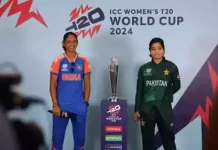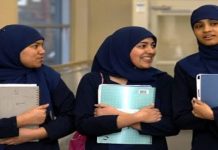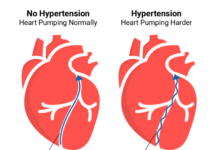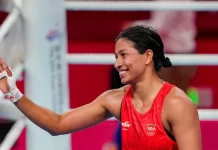India is a land of diversities and home to various ethnic, cultural, linguistic, and religious groups. The Constitution of India aims to bridge these diversities through empowering the society and providing equality of status to all of its citizens. Indian Muslims are the largest minority of the largest democracy in the world.
According to the Sachar Committee report, Muslims are the most economically, educationally and socially backward section of the Indian society.The literacy rate is considered as the basic parameter for measuring the educational development. TheSachar Committee summarised that Muslim literacy rate was only 59% whereas the national average is 64.8%. Only less than 4% of Muslims are graduates. Merely one out of 25 students is enrolled for an under graduate program and one out of 50 students is enrolled for a postgraduate program.But common Muslim in India believes that education can be the only mechanism to enhance their socio–economic status. But to mention for the least, every three out of four Muslim-dominated villages do not have a school. Nearly 40%of the Muslim-dominated villages do not have any basic health facility.
Real-time issues of the Muslim community in the country
1. Lack of quality leaders.
Indian Muslims lack a strong political leadership, which would voice their concerns without polarizing them. India has the second largest Muslim population in the world and one of the most diverse communities but Indian Muslims are poorly represented by their leaders.
2. Under representation in both public and private sectors.
According to the Sachar report, 25% of Muslim children in the age groupof 6-14 areschool dropouts. A large population of Muslim households in urban areas can afford to spend less than Rs.500 a month. Only 3% Muslims are selected to serve in the IAS, 1.8% in the IFS and 4% in the IPS. The employment rate of Muslims is only 4.5% in the Railways and 4.5% in the health sector. This work participation rate shows a sharp decline of Muslims in government and PSU jobs.
3. Insecurity and victimisation.
Global political milieu and Islamophobia have made it easy for targeting and victimizing Muslims in India. The weakening of secular parties, and the consequent rise of the BJP, has put additional burden on Muslims.
4. Poverty and family background.
India’s Muslim community has been for long facing discrimination and relatively lower living standards. Previously researches have shown that the Muslim community has the lowest rate of enrollment in higher education in India- 4.4% of students. It also faces high levels of poverty, with 25% of India’s 370,000 beggars being Muslim.
5. Partial understanding of religious education.
Islam does not distinguish between the religious and secular education. But the prevailing differentiation as of now got inherited from the 13th century practices that badly affected Muslim community world over.
6. Medium of instruction in the village schools.
The fact that the Urdu medium students can’t compete with their counterparts who are graduated from English medium curriculum.
Government programs for Muslims and their limitations
The discussion of Muslim’s backwardness started after independence.The 1990s national survey revealed that only 2.3%male and 0.8% female Muslims had graduated in the country.
For empowering minority, various governments have introduced programs like National Policy of Education 1986and its program of action 1990. The modernization of madrasa curriculum was part of this project.The Sachar report says that only 17% of Muslim students have passed matriculation exams before 17. But the fact that education without higher education or professional education can’t help a community contribute to the nation building.
The central universities for minoritieshave introduced modern education courses for madrasa students.The AMU developed a course for madrasa background students to bridge the gap betweenreligious and modern education and the Jamia Millia Islamia University recently introduced a course (NAYI MANZIL) for madrasa pass-outs for equipping them with essential English and for initiating them to the mainstream.
The programs like National Policy on Education and its Program of Action in 1986 and the Prime Minister’s 15 point program for the welfare of minorities.
In 1989 introduced another project by the Moulana Azad Education Foundation for modernization of Madrasas and other programs were also introduced by governments. But was not properly implemented atgrass root level due to the apathy of the community and government’s inertia. A study conducted in 2005 shows that “Muslims’ poor condition in education is largely due to the existing poverty and considerable negligence by the government.
The Muslims of Kerala are historically, socially and culturally distinct from their brethren in other states of India.The major reason behind is initiative within communityfor bringing political and religious leaders together especially after the Gulf migration in 1970s.
Madrassa Education in North India
The Sachar committee revealed that only 4% of Muslim students attend full time madrassa and there is no good work to seek such a balance between deen (religion) and duniya (world). The major reasons are lack of knowledge, fear and worry.The children will excel in neither and would end up average in both.
Muslims are underrepresented in both public and private sectors in India.The reason behind this problem is the lack of initiatives from within the community. The central and state governments should take steps to help Muslim community to bringthem forward(Written by SAHAD C (JAMAI MILLIA ISLAMIA NEW DELHI. It is his personal views)



































